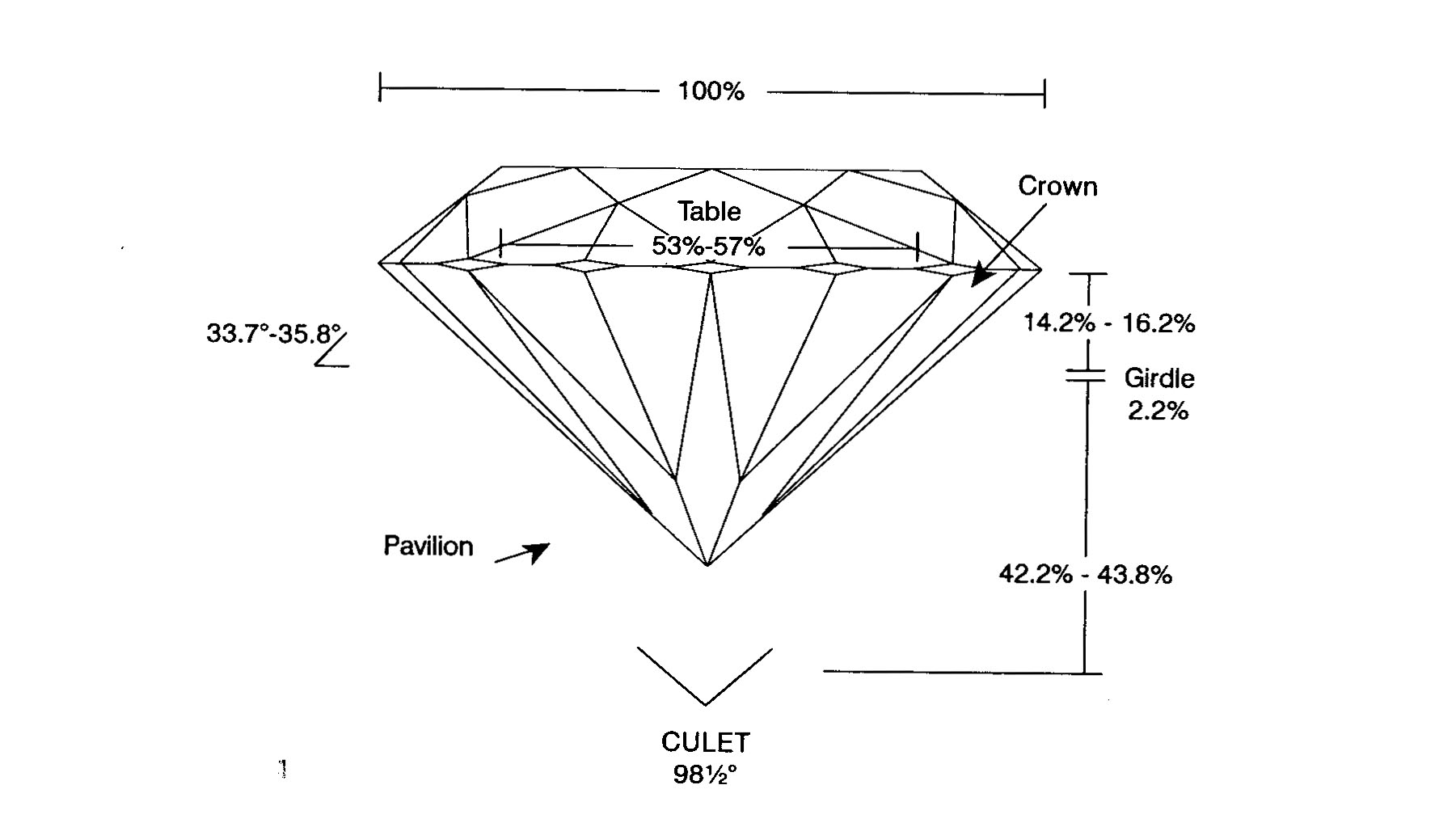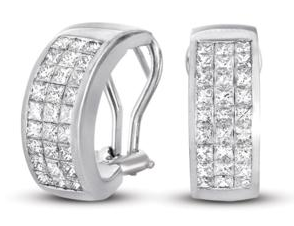Diamond - Cut
Cut is often the ignored or misunderstood feature of a diamond.
When we refer to cut we are not talking about the shape a diamond is typically made into (Brilliant, Marquis, Pear, Emerald, Oval, Heart).
Rather, when we talk about cut we are referring to the manner in which light is
reflected in a diamond.

Physics drives the answer. A diamond has a unique ability to refract or bend light. The cutter can use this to his advantage. Ideally, light that enters the top of the gemstone will be reflected internally in the gemstone and then exit the gemstone through the top. The return of white light is referred to as brilliance.
Diamonds are also cut to display dispersion. These are those bright, multi-colors you see. Dispersed light exits the stone through the top, outside edge of the diamond.
A diamond cut is of necessity a compromise between brilliance and dispersion.
For many years it was felt the American Ideal Cut was the best compromise between brilliance and dispersion. Some argued that other cuts were equally beautiful. Today, there is a raging debate in the diamond industry over what are the best dimensions for a diamond. Computer models have been developed. Several different models have been proposed. Perhaps given the new analytic tools available in the industry we will be able to determine if there is a cut superior to that of the American Ideal.
In the interim the American Ideal Cut is felt to be the best model for a round brilliant diamond. Today, diamond cut to these dimensions sell at a premium over diamonds cut to dimensions judged to be inferior.
Differences in cut can effect the value of a diamond up to 30 to 40%.

Cut is what turns an opaque, dullish-gray pebble into a mirror of light. In its ultimate form, a finely shaped diamond is a masterpiece of mathematics, its angles precisely drawn. In a classic cut, each of the 58 facets is aligned in exact relationship to the others to achieve maximum beauty."
"This is the beauty seen across a dance floor or a dining room as a brilliant flash of light, alive with a rainbow of changing colors. It's what sets the diamond apart as the paragon of gemstones. It's what makes the diamond so special, so valued.
Mystic of Diamonds, A diamond is forever brochure
If we know certain dimension are preferable why does the diamond cutter vary from these models?
Why is it so difficult to find a diamond that weighs just under a carat?